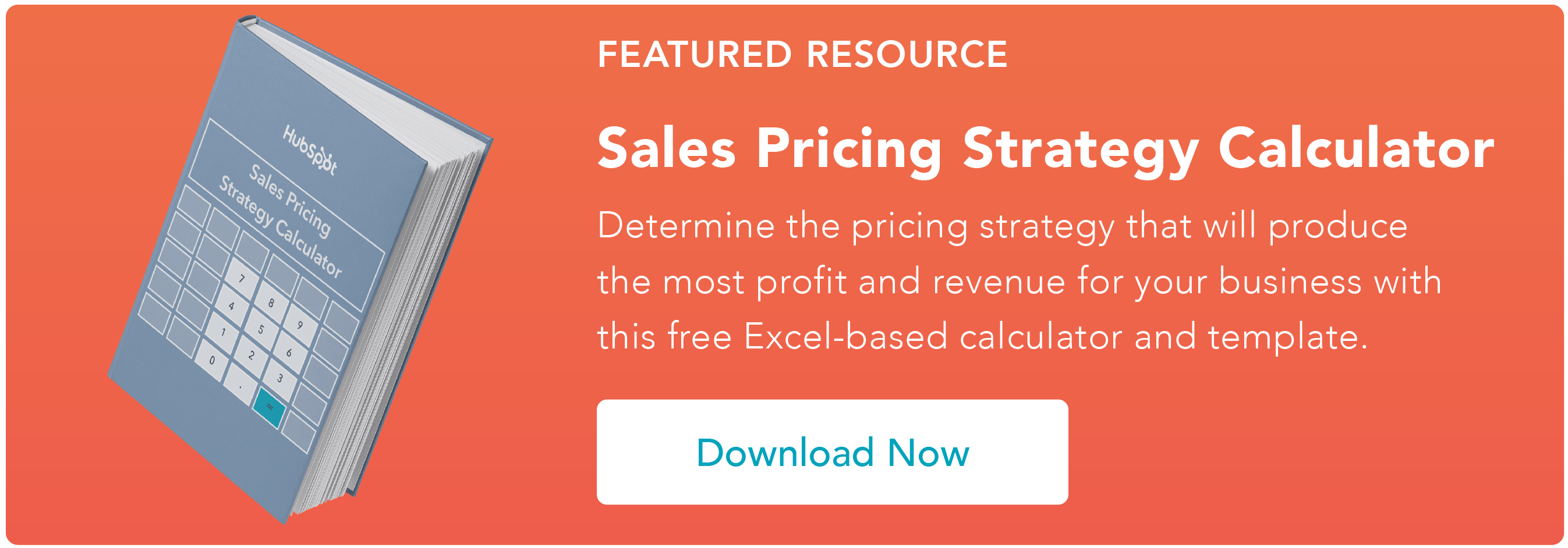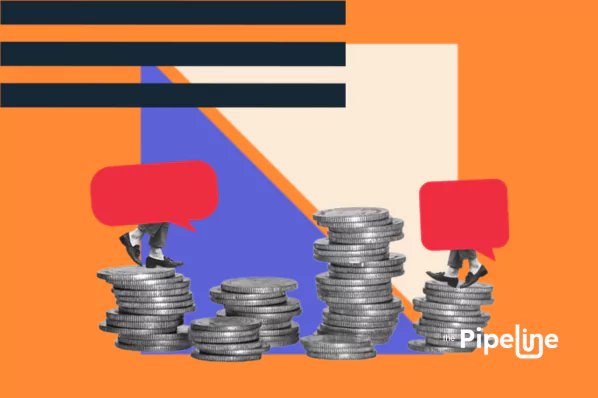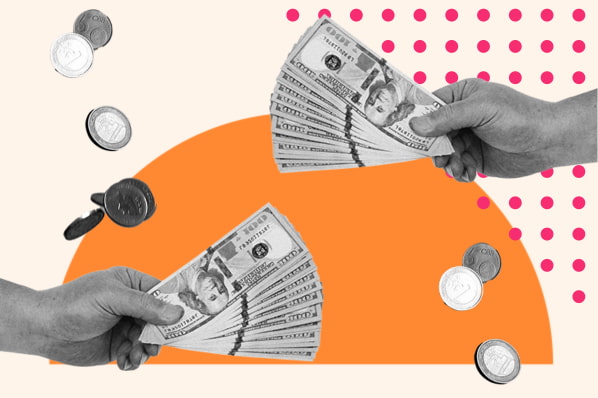Price Skimming Examples
MacBook Air M1 and M2
Apple is known for its devoted following, and its premium prices reflect that. People are drawn to the brand due to the lure of being part of the in-crowd that owns Apple products.
Who hasn’t seen people casually flaunting their AirPods, iPhones, and MacBooks on social media, indirectly advertising the company? You may have also read stories of individuals going to great lengths to get their hands on the newest Apple device as soon as it’s out — even traveling to a different country.
For this price skimming example, let’s consider the MacBook Air. The MacBook Air with the M2 chip launched with a price starting from $1,199, an increase from the previous model (the MacBook Air with M1 came out around two years earlier at a price starting from $999).
While today, the price for the MacBook Air M1 on the official Apple website still begins at $999, the same base model often goes on sale at retailers (for example, $799 at BestBuy), which might appeal to more price-sensitive customers compared to the costlier MacBook Air M2.
3D Printers
When 3D printers were first released commercially, they came with a hefty price tag. And I mean hefty — an article estimates that the SLA-1, a 3D printer in the 1980s, would set you back around $300,000.
Cut to today. As demand grew, manufacturing expenses decreased, and new competitors emerged on the scene, prices have reduced considerably, making the product more accessible to the general public.
The Advantages of Price Skimming
1. It can maximize early revenue.
Companies that employ price skimming tactics do so to recoup investments early and sell as many products as possible at the highest price point the product is likely to see.
This immediately boosts both revenue and profit, which the company can utilize to expand marketing and distribution, as well as cover R&D costs.
2. It can help create buzz.
Price skimming works well when paired with a slow rollout strategy. When price skimming is their tactic, companies know that their market share will be small to start. However, as the price drops, the anticipation of accessing the product at a cheaper rate often rises due to its newfound affordability.
For some products, customers await the opportunity to purchase when the price is right — especially when they can’t afford it initially. It’s a classic example of “you always want what you can’t have,” but with a skimming strategy, you may be able to have it a few months down the line.
3. You can adjust over time.
One of the biggest perks of a well-implemented skimming strategy is the ability to change your price as the market shifts. Starting off high, you can determine how price sensitive your buyers are and offload as much inventory as possible at the highest profit margin.
From there, it’s your call as to when the price goes down and the rate you’ll drop to. This puts the pricing model entirely in your control, and you can adjust your selling price based on market conditions and buyer behavior as you see fit.
4. It can help your brand.
Since skimming is – in the grand scheme of daily purchases – a relatively uncommon approach, employing it well can create a certain perception of your brand by the market.
Innovative. Futuristic. One-of-a-kind. New. Revolutionary. Prestigious.
These terms are often associated with products released with a price skimming model. If that’s an image you’re aspiring towards for your brand, price skimming might be the right call for your product.
The Disadvantages of Price Skimming
1. You can frustrate early buyers.
Technophiles eager to get the “new big thing” or those who front a larger-than-needed sum of money to buy your product might be disappointed – or worse, angry – when they see the price of what they purchased a month ago drop 20% overnight.
The counter? Price skimming is not exactly a secret in many industries, like tech. While early adopters may be annoyed when the price goes down, they tend to know what they’re getting into and are usually willing to pay more to get their hands on the product first.
2. It can backfire when it’s expected.
I always wait a few months after a new iPhone comes out before I consider buying it. I know the price will decrease after the initial buzz dies down.
Side note: I still miss my headphone jack.
Moral of the story? When your skimming strategy becomes a norm, it can defeat the purpose of that pricing in the first place, as many buyers could choose to instead wait to buy when they know the price will soon decrease (I see you, Apple).
This could botch your rollout strategy and limit your revenue during the first wave of pricing. Therefore, it makes sense to use price skimming sparingly, if you anticipate buyers will react this way.
3. It can’t last forever.
Ah, capitalism.
When a rival business sees how much money can be made on a product, they’ll often swoop in with a similar product at a lower price to capitalize on your success.
This leaves you with two options: leave your price the same and hope that its prestige and quality will keep your sales unaffected, or change your rate to a lower price point earlier than planned to stay competitive.
Remember that — even without competition — you’ll likely hit a limit of people you can feasibly sell to at each price point. Eventually, price skimming dictates you will have to lower your prices, so keep that in mind when making your sales forecasts.
4. It can damage your brand.
Price skimming offers many benefits to your brand, but conversely, it can also harm your brand. Companies that engage in price skimming can come across as greedy, dishonest, or manipulative, reinforcing the notion that price skimming should not be utilized by all companies or for all products.
When Price Skimming Does (and Doesn’t) Make Sense
Let’s look at some situations where price skimming might (or might not) work out.
First, here's a helpful video walkthrough of whether or not a dynamic pricing strategy is right for your business.
Makes Sense: New Technologies
From the DVD player to the smartphone and even the smart TV and Teslas, revolutionary technology products like these are almost expected to be rolled out with a skimming pricing model. And the general market tends to be excited rather than annoyed when the price drops.
Doesn’t Make Sense: B2B SaaS
Most B2B SaaS companies want to expand their user base as quickly as possible to generate a steady amount of recurring revenue. Limiting that growth potential with sticker shock can damage that early foundation and restrict compounding growth potential.
Instead, B2B SaaS companies might want to employ penetration pricing or freemium pricing by acquiring users at a low cost and gradually increasing revenue from those customers with added-on services, account users, or increased pricing later on.
Makes Sense: Clothing and Fashion
Fashion and clothing stores are known for seasonally changing prices as new styles are introduced. By that logic, using price skimming to keep the price tag high at first and then moving the item to the sale rack is an excellent strategy for these vendors.
Since most clothing stores only make a set amount of each style, price skimming works perfectly here. It is the ideal model for continuously adjusting prices until you’ve sold all of your inventory – with each piece of clothing being sold at its highest potential price.
Doesn’t Make Sense: Products With Tough Competition
If you’re entering a heavily saturated market with an undifferentiated product, it’s probably not the wisest idea to come out with a high-priced markup. Essentially, you’re not displaying any competitive advantage or reason for buyers to choose you.
Instead, try competition-based pricing, penetration pricing, or value-based pricing.
Makes Sense: Cars
Like clothing stores, new car dealers are constantly turning over new inventory and trying to sell each year’s model before the next year’s model comes along.
During the first month of that new car’s availability – demand is high, and you can justifiably keep the price high as well. However, as months 11 and 12 approach, car dealers and their buyers know the selling price will be substantially lower.
Dealers can use this strategy to provide buyers with a brand-new car at a lower cost and account for that sacrificed markup in their earlier sales.
Doesn’t Make Sense: Contracting, Consulting, and Professional Services
Professional services such as medical, legal, or consulting services are more demand-inelastic than the products that would benefit from price skimming. On top of that, it doesn’t make much sense for these types of workers or businesses to lower the costs of their services as they advance in their careers.
Instead, these businesses might benefit the most from project-based or hourly pricing models.
This blog is an excellent resource for gaining insight into different pricing strategies and how to create one for your product.
Is Price Skimming Right for Your Business?
Still unsure if price skimming is the best approach for your pricing strategy? Download HubSpot’s Sales Pricing Strategy Calculator to forecast how much revenue and profit you’ll earn by employing nine different pricing strategies – including price
Pricing Strategy
.png?width=112&height=112&name=Image%20Hackathon%20%E2%80%93%20Vertical%20(45).png)











.jpg)
![B2B Pricing Models & Strategies [+ Pros and Cons of Each]](https://53.fs1.hubspotusercontent-na1.net/hubfs/53/b2b-pricing-models-and-strategies.jpg)